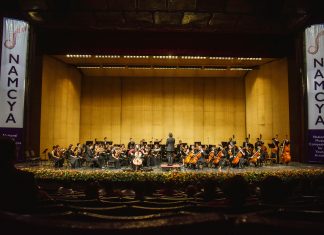 Darkness seethes through the busy streets of Manila, signaling the start of a long night for the members of the media who are routinely on standby – waiting if there will be new cases of drug-related killings, in which, usually, there are.
Darkness seethes through the busy streets of Manila, signaling the start of a long night for the members of the media who are routinely on standby – waiting if there will be new cases of drug-related killings, in which, usually, there are.
Since the tough-talking President Duterte assumed presidency, there has been a spate of drug-related deaths – whether through legitimate police operations or alleged extrajudicial killings. True to his promise of a drug-free Philippines in three to six months, the president has constantly reminded the public through his cuss-laden speeches that his war on drugs will be relentless.
There has been an overwhelming rise in the number of drug-related killings. The cases have reached over 3,000 deaths since July 1, with an average of 44 killings per day.
The figures are alarming and seemingly incomprehensible. Normal lives have been disrupted as the city turns into a firing range where the police conduct buy-bust operations and vigilantes prowl with their questionable reasons for killing people. For the members of the media, for the photojournalists, this new normal will surely take a heavy toll.
With bodies left lifeless on the streets and with vigilantes banking on the so-called ‘cardboard justice’ to get away with the killings, members of the media are embroiled in another dilemma — to stay true to the journalistic duties or to be human and condemn the unnecessary deaths in the country.
For an average person, getting exposed every night to blood, bullets and cadavers is crippling.
But for photojournalists, there is so much that lies beneath such horrific scenes. Photojournalists need to be mentally and emotionally prepared, and their ethics should not be compromised while performing their duties.
“In one month, I’ve seen more killings than in one year.” These are the words expressed by Philippine Daily Inquirer photojournalist Raffy Lerma to the World Post.
Without proper context, photojournalists can easily be judged of shying away from their morals just to get a good shot.
However, truth be told, these photographs are not reflections of the lack of humanness; the photographs are one of the essentials to expose the dire situation of the country.
Along with the fear of being desensitized, photojournalists also perform a laudable act of bringing the much-needed focus on what the public should know and care about — the killings are not normal and they cannot be allowed to constitute the new normal.
A fellow photojournalist who was covering the killing of Michael Siaron, the pedicab driver who was shot down by vigilantes and who became the main subject of the famous “La Pieta” photo, has shared on social media that while the lensmen were taking shots, the wife hugging her lifeless husband told them to stop taking photos and help them instead.
According to him, the words of the widow stirred his soul and conscience.
With this, I believe that desensitization of photojournalists is still far from happening. Lensmen remain human and conscientious despite the harshness of their professional work
I hope that stepping into crime scenes on a regular basis will not desensitize photojournalists but rather ignite a fervent fire to continue shooting the realities to the point that the public would no longer turn a blind eye to the real problems of the country.











